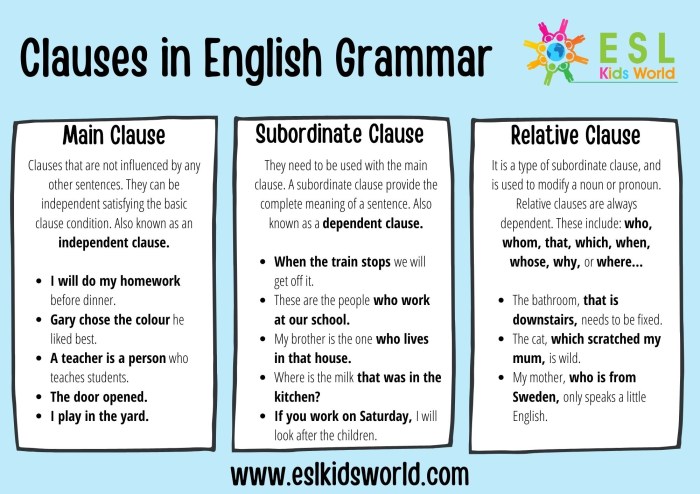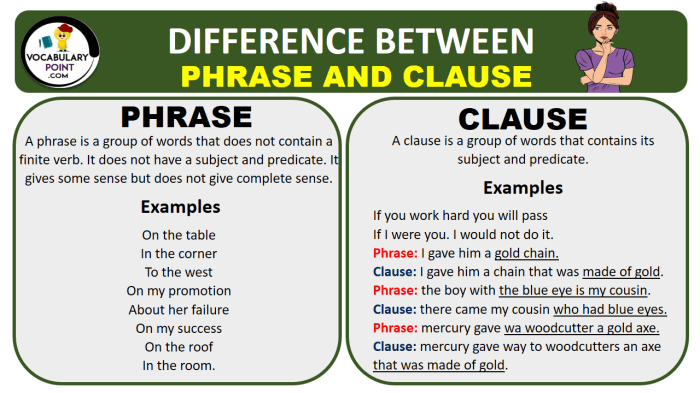Which sentences contain relative clauses check all that apply – Which sentences contain relative clauses? Check all that apply. This question requires a keen understanding of relative clauses, their types, and their functions in sentence structure. Relative clauses are essential elements of grammar, enabling us to add essential or non-essential information to sentences, enhancing their complexity and precision.
This comprehensive guide will provide a clear definition of relative clauses, explain the different types, and share examples of sentences containing relative clauses. We will also explore methods for identifying relative clauses, analyze their sentence structure, and provide tips for creating sentences with relative clauses effectively.
Identifying Relative Clauses

Relative clauses are subordinate clauses that provide additional information about a noun or pronoun in the main clause. They begin with a relative pronoun (who, which, that, etc.) and can be either restrictive or non-restrictive.
Restrictive relative clauses provide essential information that identifies or defines the noun or pronoun they refer to. They cannot be removed from the sentence without changing the meaning. For example:
The book that I bought yesterday is on the table.
In this sentence, the relative clause “that I bought yesterday” restricts the noun “book” to the specific book that the speaker bought yesterday.
Non-restrictive relative clauses provide additional information that is not essential to the meaning of the sentence. They can be removed from the sentence without changing the meaning. For example:
The book, which I bought yesterday, is on the table.
In this sentence, the relative clause “which I bought yesterday” provides additional information about the book, but it is not essential to the meaning of the sentence.
Methods for Identifying Relative Clauses, Which sentences contain relative clauses check all that apply
Relative clauses can be identified by the following grammatical cues:
- Relative pronouns (who, which, that, etc.)
- Commas (in non-restrictive relative clauses)
- Other grammatical cues (such as the form of the verb)
Relative pronouns introduce relative clauses and indicate the grammatical function of the clause. For example:
- Who (for people)
- Which (for things)
- That (for people or things)
Commas are used to separate non-restrictive relative clauses from the main clause. For example:
The book, which I bought yesterday, is on the table.
Other grammatical cues that indicate the presence of a relative clause include the form of the verb. For example, in the following sentence, the verb “is” is in the present tense, which indicates that the relative clause is non-restrictive:
The book, which is on the table, is new.
Analyzing Sentence Structure with Relative Clauses
Relative clauses can modify nouns or pronouns in a sentence. They can function as adjectives or adverbs.
When a relative clause modifies a noun, it acts as an adjective. For example:
The book that I bought yesterday is on the table.
In this sentence, the relative clause “that I bought yesterday” modifies the noun “book”.
When a relative clause modifies a verb, adjective, or adverb, it acts as an adverb. For example:
I bought the book that you recommended.
In this sentence, the relative clause “that you recommended” modifies the verb “bought”.
Relative clauses can add essential or non-essential information to a sentence. Essential information is necessary for the meaning of the sentence, while non-essential information is not.
Essential relative clauses cannot be removed from the sentence without changing the meaning. For example:
The book that I bought yesterday is on the table.
In this sentence, the relative clause “that I bought yesterday” is essential because it identifies the specific book that the speaker is talking about.
Non-essential relative clauses can be removed from the sentence without changing the meaning. For example:
The book, which I bought yesterday, is on the table.
In this sentence, the relative clause “which I bought yesterday” is non-essential because it provides additional information about the book, but it is not necessary for the meaning of the sentence.
Creating Sentences with Relative Clauses
To create sentences with relative clauses, follow these steps:
- Identify the noun or pronoun that you want to modify.
- Choose a relative pronoun that matches the grammatical function of the noun or pronoun.
- Write the relative clause, providing additional information about the noun or pronoun.
- Place the relative clause immediately after the noun or pronoun.
For example, to create a sentence with a relative clause that modifies the noun “book”, follow these steps:
- Identify the noun that you want to modify: book
- Choose a relative pronoun that matches the grammatical function of the noun: that
- Write the relative clause, providing additional information about the noun: that I bought yesterday
- Place the relative clause immediately after the noun: The book that I bought yesterday is on the table.
Here are some additional tips for creating sentences with relative clauses:
- Use commas to separate non-restrictive relative clauses from the main clause.
- Make sure that the relative pronoun agrees with the noun or pronoun that it refers to in number and gender.
- Avoid using long or complex relative clauses.
Helpful Answers: Which Sentences Contain Relative Clauses Check All That Apply
What are relative clauses?
Relative clauses are groups of words that describe or provide additional information about a noun or pronoun in a sentence.
How can I identify relative clauses?
Relative clauses are often introduced by relative pronouns such as who, which, that, and whose.
What are the different types of relative clauses?
There are two main types of relative clauses: restrictive and non-restrictive. Restrictive relative clauses provide essential information that identifies the noun or pronoun they modify, while non-restrictive relative clauses provide additional information that is not essential to the meaning of the sentence.

